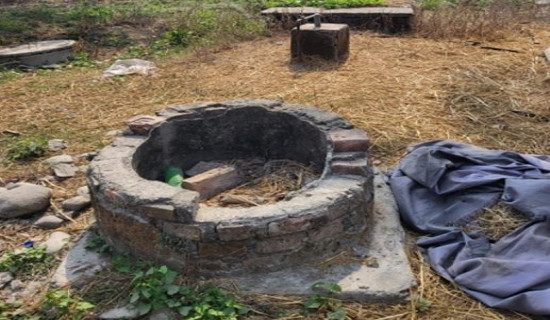- Monday, 8 December 2025
Boost Investment In Cricket Infrastructure
Nepal’s presence in the Cricket World Cup is a monumental achievement, a testament to the talent and passion that exists within the country. The nation should take immense pride in its cricketers, who have overcome significant challenges to compete on the world stage. However, as we celebrate this milestone, it is crucial to acknowledge the severe shortcomings in the support provided by the government and the cricketing infrastructure in Nepal.
There is a recurring expectation for Nepal to perform at the same level as cricketing powerhouses like Australia, India, and England. These nations have a long history of investment in their cricketing infrastructure, training facilities, and grassroots development programmes. In contrast, Nepal’s cricketers have had to make do with limited resources and minimal governmental support. The disparity in investment raises a fundamental question: How can we expect Nepal to achieve similar levels of success without comparable support?
Australia, for instance, has a well-established cricketing culture supported by state-of-the-art facilities and a robust domestic competition. Their success is not accidental but the result of decades of systematic investment and development. Expecting Nepal to replicate this success without similar foundations is not only unrealistic but also unfair to the dedicated athletes who represent the country. One of the most glaring issues is the lack of a proper stadium to host international cricket matches.
Talent and enthusiastic fans
Nepal, a country brimming with cricketing talent and enthusiastic fans, does not even possess the basic infrastructure necessary to organise an international game. This inadequacy is a significant impediment to the growth of the sport in the country. The absence of a stadium reflects a broader neglect in sports infrastructure. While other nations continually upgrade and expand their facilities to stay competitive, Nepal lags far behind. The government's failure to build a stadium or invest in essential infrastructure is not just a missed opportunity; it is a matter of national shame. This neglect undermines the potential of Nepali cricket and hinders the development of future generations of cricketers.
Long-term internal politics and leg-pulling within the Cricket Association of Nepal (CAN) have been a detrimental force, stunting the growth of cricket in the country. These internal conflicts have created an unstable environment, making it difficult to implement long-term strategies and development plans. Despite these challenges, there is hope on the horizon. The new board of CAN appears dedicated to improving the situation and laying a solid foundation for cricket in Nepal. However, their success is contingent on receiving adequate support from governmental authorities and overcoming entrenched internal politics. The question remains: Will they receive the necessary backing to sustain their efforts and drive meaningful change?
One of Nepal’s greatest assets is its passionate fan base. The unwavering support from fans is a trump card that could significantly propel the nation’s cricketing ambitions. The enthusiasm and dedication of the fans create a vibrant cricket culture that can inspire and motivate players to perform at their best. There is nothing wrong with fans expecting Nepal to perform at the highest level; in fact, this expectation can drive progress and improvement. However, fan support alone is not enough. To fulfil these expectations, substantial investment in infrastructure and development is imperative. The government must recognise this and take immediate action to provide the necessary resources and facilities.
The most urgent and necessary step for the government is to involve the private sector in developing cricket infrastructure. A collaborative approach can lead to more efficient and effective solutions. One innovative idea is to explore the concept of an Initial Public Offering (IPO) to fund the construction of a stadium. This approach could mobilise resources quickly and engage the public in the development process.
The United States has demonstrated that it is possible to build a stadium in a short time frame. Within six months, they constructed a stadium with a capacity of over 38,000 seats and successfully hosted a World Cup event. This example proves that with the right expertise and determination, rapid progress is achievable. Nepal can and should learn from such examples and strive to create similar infrastructure in a timely manner.
Urgency and responsibility
Building a world-class stadium and improving cricket infrastructure will have benefits beyond the sport itself. Hosting major events can boost tourism, showcasing Nepal to a global audience and stimulating the local economy. Moreover, enhanced facilities will provide better training environments for athletes, raising the overall standard of Nepali cricket and potentially leading to more consistent success on the international stage.
In conclusion, while Nepal should take immense pride in its cricketing achievements, it is essential to address the systemic issues hindering further progress. The government must feel a sense of urgency and responsibility to invest in the necessary infrastructure and support the dedicated individuals working to elevate Nepali cricket. By involving the private sector and learning from successful models around the world, Nepal can create a thriving cricketing ecosystem that matches the passion and potential of its people. Only then can the dream of competing on equal footing with the world’s cricketing powerhouses become a reality.
(Parajuli is a freelancer)
















